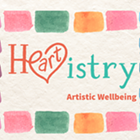Google Earth is a pretty cool piece of software. Early on in my tenure as chairman of the Riverfront Park Master Plan Advisory Committee, from my desk I could zoom down on Riverfront Park. From high above, it's beautiful — kind of like a big, emerald thumbs-up. It's easy to see why settler William Cowley called the area around Spokane Falls "a corner of paradise."
But I've walked the Park many times, too. Up close, it's a different picture — peeling paint, gates blocking off meadows and nary a sign pointing you to the Falls, the Centennail Trail or even a parking spot. The Park is like most of us when we hit 40 — at an age when we have to start taking better care of ourselves.
But there's a whole "don't change, you're perfect" syndrome surrounding our Park, driven by nostalgia. You'd think former Mayor Jack Geraghty would share that feeling — after all, he worked public relations for Expo '74. But during an early forum in our year-long process, he surprised me when he told us not to be afraid to move on from elements of the Park that aren't working. Change, he told us, is necessary.
Geraghty also advised that we identify those things we want to keep around for the next 40 years and work to preserve them and make them relevant. For me, that meant the U.S. Pavilion. It was the centerpiece of the World's Fair, and it remains the centerpiece of our Park and our city. The Space Needle (also a World's Fair remnant) has become known around the world as visual shorthand for Seattle; the Pavilion needs to be just as iconic.
But since we haven't taken proper care of it, we've got a lot of work to do. To start with, we watched the roof fall off and never replaced it. Today a tangle of loosely related uses leaves visitors confused. If the Pavilion speaks for Spokane, what exactly is it saying?
A new covering, with dynamic lighting, will make it a focal point, especially at night. And the space under our big tent needs to become a destination again — a place where visitors and locals can connect with the spirit of our community and where fun happens on a regular basis. A flexible, multi-use event space on the Pavilion floor could host everything from farmers markets to Hoopfest to concerts to arts festivals to microbrew tastings. This is our most important public space, and we need to bring it into the current century with a new look and a new mission. ♦
All this month, I'll be devoting my column to the future of Riverfront Park. Next week: Systemic changes. To read all the advisory committee recommendations, visit riverfrontparkmasterplan.org.

























